| Spartan 6 drum computer | |||
|
128 oscillators 16 voices 128 midi channels 96 kHz Audio DSP Sound Demo 1 Sound Demo 2 Demo Track |
A complete drum computer in VHDL Spartan 6 LX Development System . 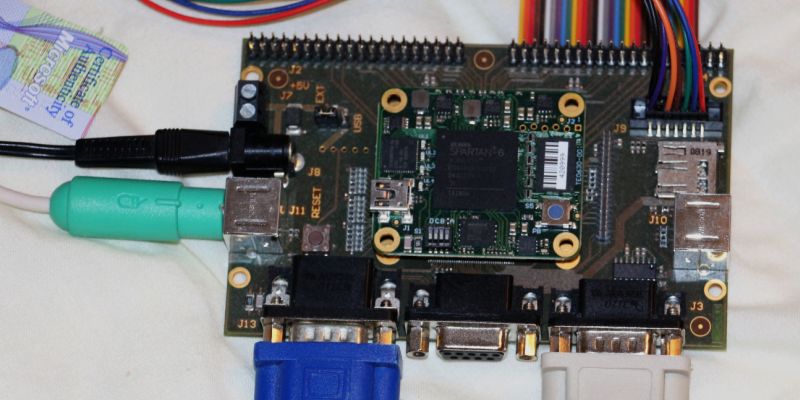 A Spartan 6 FPGA board from Trenz Elektronik Germany is used for sound synthesis and video generation. 2 PS/2 ports (mouse + keyboard) are available for graphic and synthesis control. Also a MIDI-controller can be attached: The DIY-MIDI-Controller works with standard 230kBaud, which is about 7 times faster than normal MIDI (31,250bps). The design was derived from my universal VA-synthesizer module formerly realized in the Cyclone 4 platform which was ported to the Spartan 6 device, initially intended for the Multi Audio-Video-FPGA platform. The sample frequency can be selected from 48kHz, 96kHz and also 192Hz. All processing units do adapt automatically in this design. To obtain to best sound quality possible especially for the brilliance of the HF and adapt to current audio hardware, 192kHz have been chosen as the sample frequency. Read here about the advantage of 192kHz in audio processing. Even with 192kHz still 1024 voices can be used running the circuit with full operation speed at 216 MHz. This is already more or less the limit of the Xilinx Spartan 6 device because of the technology and also the determined limitation of the PLL oscillator. With the subsequent design, all clocks including video, audio and filter tick can be derived from only one PLL using the existing external oscillator of the board. With that speed the FPGA already becomes pretty warm and possible requires cooling. Hopefully the sound gets "warm" too :-) If necessary they might be warmed up with the non linear amplification circuit. 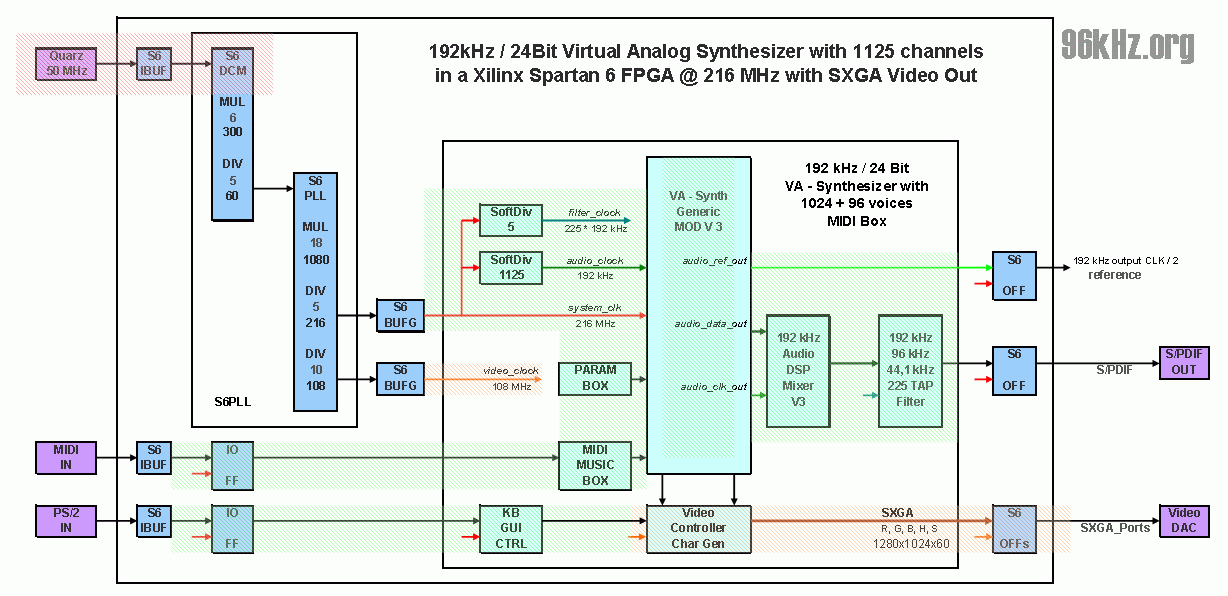 "True Analog" filtering is applied with a 225 TAP FIR filter running 5 times the speed of the sampling frequency instead of only running exactly at the sampling frequency as with common audio processing software. 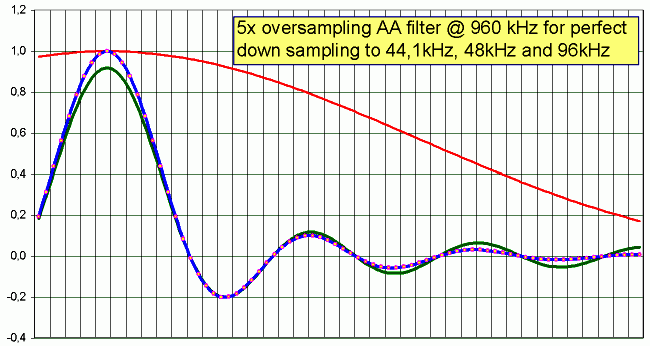 The filter consists of a symmetric set of optimized binary coefficients using a modified Blackman-Harris window and performs nearly artifact free real time resampling with just only two 25x18 multiplier at full system speed leading to a 24Bit precise calculation with 36Bit precise coefficients. Music Box / MIDI Engine The Data handling is done following an hierarchical architecture of song / pattern / sequence scheme controlling the synthesis unit. 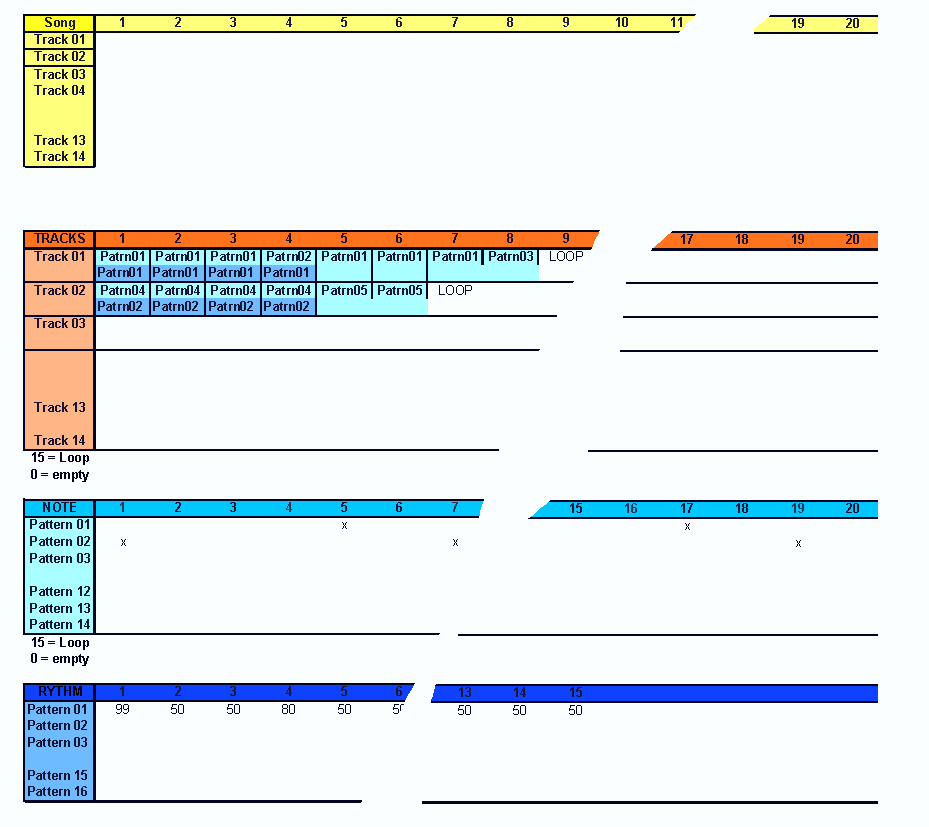 For the music box unit a modified version of the mbox07 structure used in the organ vplayer is applied: 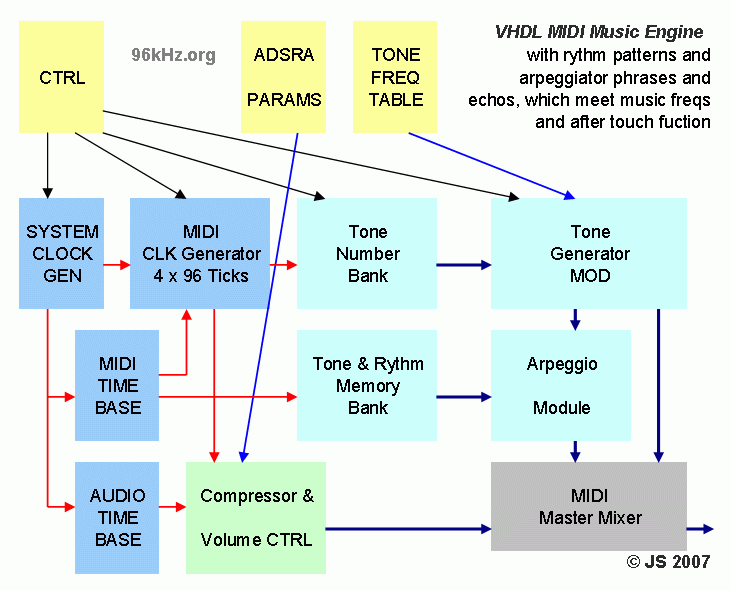 The Music Engine produces MIDI-like information, based on pre defined rhythm and tone patterns which are kept in a memory. The tone notes are copied/doubled according to the ARP pattern, compressed in loudness and modified by the ADSR-module end then sent to the synth module synchronously. 255 Tone Levels = quarter Notes covering 127 MIDI Notes are available. The arpeggio module uses adjacent MIDI channels to produce MIDI echo rather than audio echo. This is possible with a very high time resolution creating short reflections similar to room reverb. For the slower (normal) arpeggio the channels can use different parameters for the voices. Listen to the Drum Demo Sound.mp3 The Synthesis Uni is taken from an existing VA-Synth Platform making some controllers fixed and some others variable:  The synthesizer uses the MIDI notes and produces audio signals for each midi channel from generic functions, tone banks, or DDS-based sine waves. Wave table utilization is planned. Also true random generators are possible acting as my vhdl noise generators. The synthesizer operates totally pipelined and with 50MHz clock speed and processes 128 from 256 possible MIDI channels, has 3 oscillators / wave generators and 256 voices polyphony. 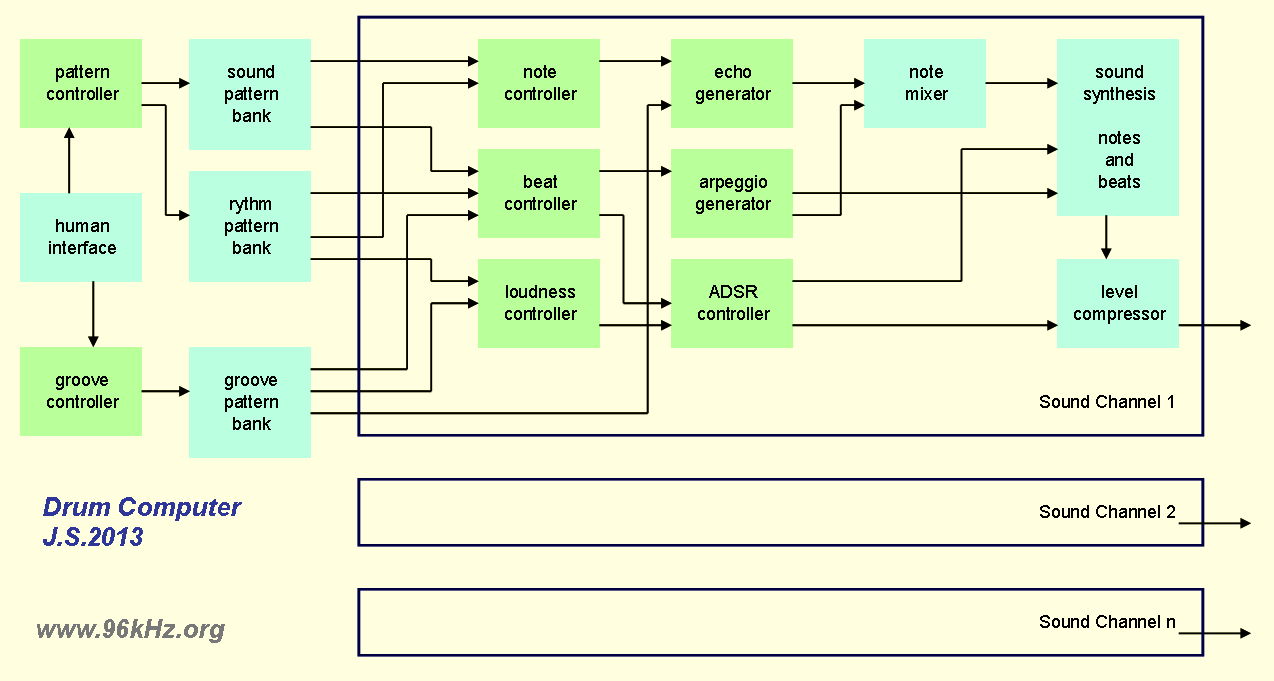 Data Flow of the drum computer Graphical Sound Analyzer 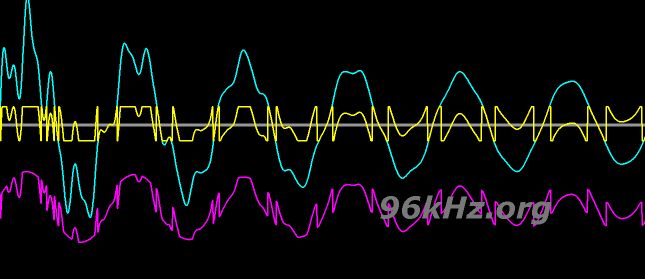 A simple oscilloscope function in the FPGA is used to control and analyze the wave form during sound generation and modification. The video runs at 108 MHz with 1280x1024 pixels. Graphical Spectrum Analyzer 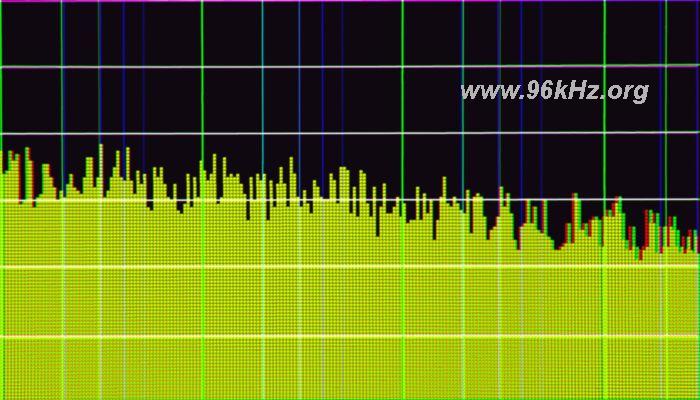 Drum Computer Synthesizer GUI 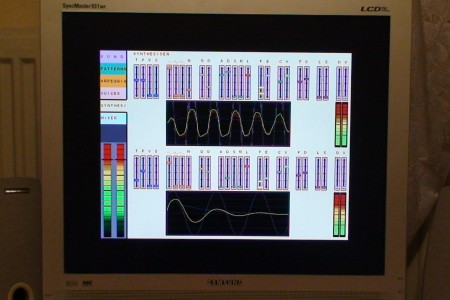 A simple 800x600 pixel GUI in VHDL is used to control the parameters of the drum machine. All values can be displayed virtually on a VGA monitor including the oscilloscope like frequency and wave form monitors. Drum Computer Front 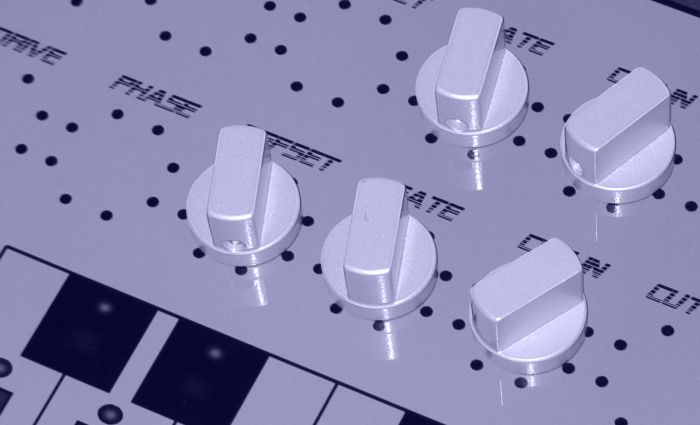 The front of the intended midi controller for the drum computer using classical Mentor knobs for the encoders.  The front skin design of the drum computer with 16 step sequencer and individual tone control for each musical step for tuning the sounds. Thus bass drums and toms can be setup with the right frequency to met the melody's tuning. The design is done with excel and printed on silver foil. Drum Sound Morphing 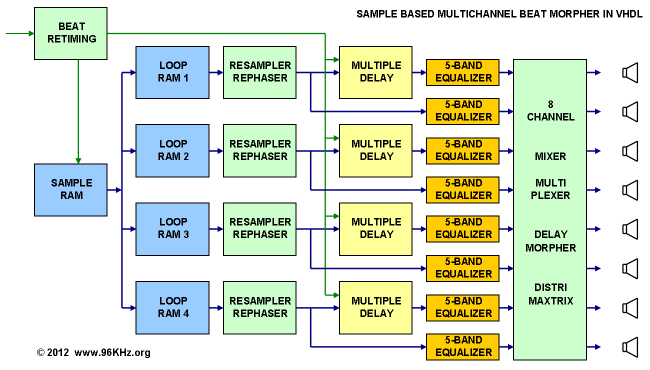 The built in sound design module can modify the sounds in real time by adding echoes and delay bases extra information with frequency treatment. Listen to a fading demo: Drum Delay Fader Demo See the german discussion page: MCNET See Page 2 of the drum computer in VHDL: Drummix 2 |
||
|
|
|||
© Dipl.-Ing. Jürgen Schuhmacher 2012